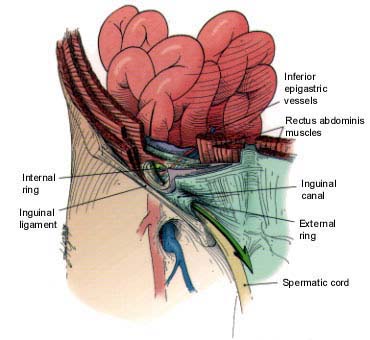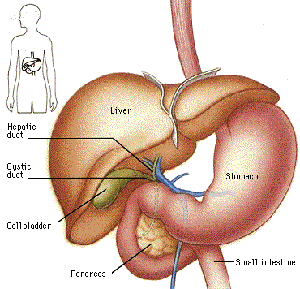What is a Hysterectomy?
A hysterectomy is an operation for removing a woman’s uterus (womb). The uterus is where a baby grows, when a woman is pregnant. In some cases, the ovaries and fallopian tubes also are removed. These organs are located in a woman’s lower abdomen (see image below). The cervix is the lower end of the uterus. The ovaries are organs that produce eggs and hormones. The fallopian tubes carry eggs from the ovaries to the uterus.
What is a Hysterectomy recommended for?
Hysterectomy may be needed if a patient has one of the following conditions:
Gynecologic cancer:
If a patient has a gynecologic cancer — such as cancer of the uterus or cervix — a hysterectomy may be the best treatment option. Depending on the specific cancer that the patient has and how advanced it is, other options might include radiation or chemotherapy.
Fibroids. Hysterectomy is the only certain, permanent solution for fibroids — benign uterine tumors that cause persistent bleeding, anemia, and pelvic pain or bladder pressure. Non surgical treatments of fibroids are a possibility, depending on discomfort level and tumor size. Many women with fibroids have minimal symptoms and require no treatment.
Endometriosis. In endometriosis, the tissue lining the inside of patient’s uterus (endometrium) grows outside the uterus on ovaries, fallopian tubes, or other pelvic or abdominal organs. When medication or conservative surgery doesn’t improve endometriosis, the patient might need a hysterectomy. Uterine prolapse. Descent of the uterus into the patient’s vagina can happen when the supporting ligaments and tissues weaken. Uterine prolapse can lead to urinary incontinence, pelvic pressure or difficulty with bowel movements. Hysterectomy may be necessary to achieve satisfactory repair of these conditions.
Persistent vaginal bleeding. If periods are heavy and irregular or last many days each cycle, a hysterectomy may bring relief when the bleeding can’t be controlled by any surgical methods. Other conditions — including fibroids, endometriosis and uterine prolapse — have alternative treatments that patient can try first. Types of Hysterectomy Surgery:
· Complete or total. Removes the cervix as well as the uterus. (This is the most common type of hysterectomy.)
· Partial or subtotal. Removes the upper part of the uterus and leaves the cervix in place.
· Radical. Removes the uterus, the cervix, the upper part of the vagina, and supporting tissues. (This is done in some cases of cancer.)
Procedure of Hysterectomy Surgery:
Hysterectomy is a very common operation. The uterus may be completely or partially removed, and the tubes and ovaries may also be removed at the time of hysterectomy. A partial (or supracervical) hysterectomy is removal of just the upper portion of the uterus, leaving the cervix intact. A total hysterectomy is the removal of the entire uterus and the cervix. A radical hysterectomy is the removal of the uterus, the tissue on both sides of the cervix (parametrium), and the upper part of the vagina. A hysterectomy may be done through an abdominal incision (abdominal hysterectomy), a vaginal incision (vaginal hysterectomy), or through laparoscopic incisions (small incisions on the abdomen — laparoscopic hysterectomy).
Abdominal vs. Vaginal Hysterectomy Surgery:
Hysterectomy can be performed through an incision in abdomen (abdominal hysterectomy) or through vagina (vaginal hysterectomy). The suitability and the selection of the procedure depends on specific situation.
Abdominal Hysterectomy
In abdominal hysterectomy, the surgeon cuts through skin and connective tissue in patient’s lower abdomen to reach the uterus. The surgeon uses one of the two types of abdominal incisions for the hysterectomy. A vertical incision starts in the middle of patient’s abdomen and extends from just below the patient’s navel to just above the patient’s pubic bone. A horizontal bikini-line incision (Pfannenstiel incision) lies about an inch above the patient’s pubic bone.The advantage of an abdominal procedure is that the surgeon can see the patient’s uterus and other organs and has more room to operate than if the procedure is done vaginally. For this reason, the surgeon may opt for the abdominal procedure if the patient has large tumors or if the doctor suspects the presence of cancer.On the other hand, abdominal hysterectomy can mean: Patient will be in the hospital longer. Patient will experience greater discomfort than following a vaginal procedure. Patient will have a visible scar on her abdomen. Vaginal Hysterectomy
In a vaginal hysterectomy, the surgeon reaches uterus by making a circular incision around the cervix. This approach is best for benign conditions that lead to hysterectomy when the uterus isn’t too large. It’s often the best approach for uterine prolapse. With a vaginal hysterectomy, the patient won’t have any external scarring. The patient may also recover more quickly because she doesn’t have to wait for a large abdominal incision to heal and the nerve signals from the top of the vagina aren’t perceived in the same manner as those from the skin.However, vaginal hysterectomy gives the surgeon less room to operate and no real opportunity to view the patient’s pelvic organs.Laparoscopically assisted vaginal hysterectomy allows the doctor to view the patient’s pelvis and to remove uterus vaginally, when it otherwise would require a large abdominal incision. The surgeon makes a small incision near navel to insert a thin device (laparoscope) that allows the surgical team to see inside the patient’s abdomen. Through other tiny incisions, the surgeon uses special surgical instruments to detach the uterus and then remove it through the patient’s vagina.
Recovery after a Hysterectomy Surgery
Recovery after a hysterectomy takes time. Immediately after a hysterectomy, the patient will stay in the hospital for 1 or 2 days for post surgery care. Some women may stay in the hospital up to 4 days depending on their recovery from surgery. About 4 to 6 weeks after the hysterectomy, the doctor will examine the patient in his or her office. The patient should be able to return to all the normal activities, including having sexual intercourse, in about 6 to 8 weeks. At home, the patient may resume normal diet. She may take a bath or shower. Wash the incision with soap and water (the stitches do not have to be removed, as they will dissolve in about 6 weeks). A dressing over the incision is not necessary. If skin clips (staples) were used, they will need to be removed by the patient’s health care provider. The patient may use lotions and cremes on the skin around the incision to relieve itching. She should gradually increase her level of activity as she gains strength in the pelvic region and does not feel the pain. Complete normal activities can be resumed within 4 to 6 weeks or sooner if the procedure was performed vaginally.The patient can travel out of town 3 weeks after surgery, including air travel. Avoid lifting heavy objects (over 10 pounds) for at least 4 weeks. Do not douche or put anything into the vagina for 4 weeks. The patient may have intercourse 4 weeks after surgery, or as directed by her health care provider. Patients can usually go back to work in 3 to 6 weeks, depending on the procedure. Hysterectomy Surgery In India:
Medical tourism has now become a common form of vacationing as it mixes tourism leisure, fun and relaxation together with wellness and health care. India, with its affordable prices and top-notch medical expertise has become a hot destination for medical tourism. Here you can easily couple your medical procedure with a healing and rest at a serene beach or mountain resort, for less than a fifth of the price anywhere else in the world. The corporate sector and the tourism industry have joined hands together to facilitate this initiative. In India our infrastructure and technology is on par with that in USA, UK and Europe, we also have some of the most qualified and experienced doctors in the world. Add to this instant administration and round-the clock attention. We offer low-cost but world-class medical treatment and couple it with a holiday that you will remember for a lifetime. India’s top-notch private hospitals are a huge draw for medical tourists from around the world.
To know more about Hospitals in India and the Hysterectomy Surgery packages available in Hospitals,
http://www.indianhealthguru.com
International Patient Experiences & Photos
International Patient Testimonials

